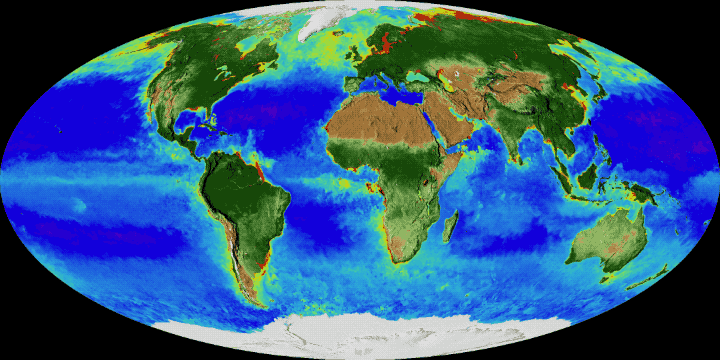
NASA has recently captured and published a time-lapse video of the Earth changing its colour through the last 20 years. The season change was also strikingly captured in the video by the space agency's satellites.
One can witness the melting of polar ice caps and snow covers with the passing seasons in the video. The varying ocean shades of blue, green, red and purple depict the abundance of undersea life or the lack of it.
Just about sixty years ago, humans were not sure whether or not their planet's surface could ever be seen from the space. Now after decades changing climate, from September 1997 to September this year, has been crunched into 2 ½ minutes of viewing.
The first Landsat mission had started its 45-year record of vegetation and land cover in 1972. Astronauts started using specialized cameras to take pictures of Earth that show the beauty and complexity of the living planet and also helped kickstart the era of Earth science research from space.
"As the satellite archive expands, you see more and more dynamics emerging," said Jeffrey Masek, chief of the Biospheric Sciences Laboratory at NASA Goddard. "We're now able to look at long-term trends."
"It's like watching the Earth breathe. It's really remarkable," said Nasa oceanographer Jeremy Werdell, who took part in the latest project, reported AP. "It's like all of my senses are being transported into space, and then you can compress time and rewind it, and just continually watch this kind of visualization," he added.
According to Werdell, the visualization shows spring coming earlier, autumn lasting longer in the Northern Hemisphere and also the Arctic and Antarctic ice caps receding over time.
In case of the ocean, Werdell was astonished by "this hugely productive bloom of biology," which had exploded in the Pacific along the equator during the time period between 1997 and 1998. A water-warming El Nino had merged into cooling La Nina during this time. This algae bloom is evident by a line of bright green.
In considerably smaller Lake Erie, more and more contaminating algae blooms are apparent. You can see it appearing in red and yellow in the animated video.
As our Earth changes more with time, so will the visualization in future, said some NASA officials. With the expansion of technology, new remote-sensing satellites have been launched into space and more observations are being made currently, which will be visible to us in the future.









